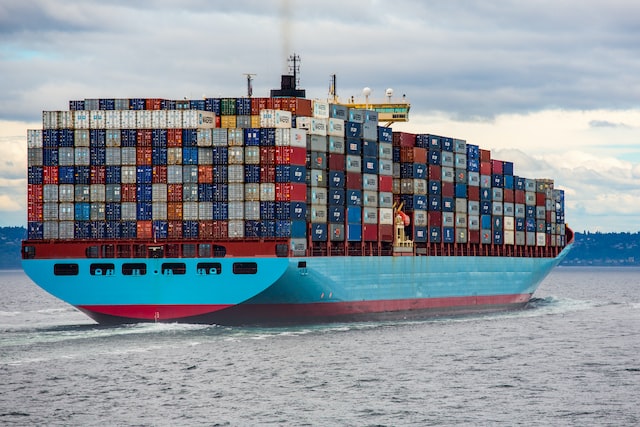The global food and agricultural market widened in the last decades through a larger national involvement. Today, trade is perceived as a substantial means to enhance social, economic and environmental outcomes. Indeed, the United Nations acknowledged that economic growth, poverty reduction, and the fulfilment of the Sustainable Development Goals (SDGs) could be nurtured by international trade.
The COVID-19 pandemic jeopardized cross-national trade and, the current war in Ukraine and climate change are also posing concerns for global food security and nutrition. These recent events have put the agricultural market under pressure, demonstrating thus the significance of a robust and well-integrated global agrifood system to overcome disruptions, especially for low-income countries.
In this context, the latest State of Agricultural Commodity market report, released by the FAO in 2022, tackles today’s issues regarding sustainable development by dealing with trade policies through both multilateral and regional approaches.
“Food and agricultural trade policies should aim to safeguard global food security, help to address the trade-offs between economic and environmental objectives, and strengthen the resilience of the global agrifood system to shocks, such as conflicts, pandemics and extreme weather.” – FAO.
The role of trade related to the food and agricultural sector
Trade enables the supply of food products to where it is needed, contributing to food security and healthy diets. It can bring some food products to regions where domestic production cannot sustainably fulfil the demand. As such, trade helps countries to meet their food requirements by supplying quantity and diversity of food.
Agricultural production heavily relies on natural resource endowments, such as land and water. Hence, some types of food are more likely to sustainably grow in some areas than others. For instance, tropical fruits require hot and humid environments which is not very common in Europe. Thus, trade plays an important role here since food imports can strengthen the availability of calories and nutrients in countries with restricted natural resources.
Recently, the global food and agricultural market has become more heterogeneous. Trade between low- and middle-income countries generalised. This is prominent since trade eases the spreadof technology and knowledge, and improves productivity and overall growth. Nonetheless, a considerable productivity gap in agriculture persists between high and low-income countries. In this line, many lower middle- and low-income countries encounter challenges in capacity, such as technology adoption, access to modern inputs or restricted access to credits.
The natural distribution of resources and disparities in productivity frame the comparative advantage. Nevertheless, this principle can be disrupted by stresses, such as pandemics, conflicts, and environmental disruptions.
Impacts of the Ukraine war on trade
Although global food and agricultural trade are, nowadays, more balanced and able to bounce back from disruptions by ramping up imports, dependencies at the product scale remain, particularly in staple foodstuffs. Ukraine and the Russian Federation account for some of the major exporters of wheat and are very influential in the trade of this product. As such, their production covers over 30% of wheat imports in more than 30 net importers of wheat. More concerning, in 2021, Eritrea sourced the aggregate of its wheat imports from both Ukraine and the Russian Federation. The Russian Federation is also among the world’s top three exporters of fertilisers.
To this day, food insecurity and malnutrition have worsened as the war hinders the worldwide wheat supply and further weakens the purchasing power of local populations.
The United Nations recommends diversifying food export suppliers to increase countries’ resilience by benefiting from several options. Existing food stocks must be utilised, and efforts must concentrate on widening the diversity of countries’ domestic production bases to strengthen self-sufficiency.
Potential opportunities for addressing climate change through trade
In essence, at the total level, trade can offer efficiency-enhancing concerning the utilisation of natural resources in agriculture. Trade, generally, allocates food production in high resource use efficiency by shaping relevant comparative advantages.
Food and agricultural trade can be cornerstones regarding climate change adaptation and mitigation. For instance, diminishing trade costs in low-income countries, especially in sub-Saharan Africa, can play a significant role.
“The importance of trade agreements does not only emanate from economic gains.” – Qu Dongyu, FAO Director-General.
Multilateral approaches, such as agreements under the World Trade Organisation (WTO) or the United Nations Framework Convention on Climate Change (UNFCCC) Paris Agreement, are strongly needed to combat climate change. Trade agreements comprising environmental clauses can be pertinent to ascertain a good middle ground between economic and environmental trade-offs. In some contexts, regional trade agreements (RTAs) can be more appropriate than multilateral negotiations as they can be more targeted and quicker to obtain consensus.
“Global challenges require global solutions.” – Qu Dongyu, FAO Director-General.
At the same time, adverse environmental impacts can also stem from trade. Unsustainable freshwater withdrawals, pollution, biodiversity loss and deforestation are indicators that must be kept in mind so that trade is not carried out at the expense of the environment.
Takeaways
- World food security and healthy diets can be fostered by trade.
- Trade is a relevant principle to increase the resilience of the global agrifood system. However, it lays out some limits, especially when relying on a few countries.
- All countries can benefit from trade in rules-based, predictable, and well-functioning global markets.
- Trade agreements must aim at balancing economic, social and environmental trade-offs.
- Policies are essential to regulate trade, but it is not the panacea. It must be supplemented by other actions, such as coordination across countries.
- Multilateralism and regional initiatives are fundamental to ensure food security, better nutrition, and adequate responses to shocks.
Written by David Mingasson, SIANI reporter.
